About 900 million miles away in two different galaxies, a black hole and a neutron star merged, and their gravitational waves have been detected here on Earth. These detections add another type of merger to the collection so far discovered. Plus, new composition data on Mars’ south polar cap and a look back at the Tunguska Event. #AsteroidDay
Podcast
Transcript
Hello and welcome to the Daily Space. I am your host Dr. Pamela Gay.
And I am your host Beth Johnson.
And we are here to put science in your brain.
If things seem a bit out of sorts today, it’s because the episode we planned last night had to be largely tossed out the window due to a large breaking science story. This doesn’t happen very often to us, but a pair of black holes was caught eating a pair of neutron stars, and this is kind of the astronomical equivalent of “if it bleeds it leads.” We’ll be dedicating our second segment of the show to that event. For now, let’s visit a few of today’s planned stories.
In my senior year of high school, back before I really knew volcanoes would one day play a role in my professional life, Mount Pinatubo erupted in the Philippines. This explosive eruption came from a previously non-threatening and very eroded volcano that was covered in dense forests and, unfortunately, a whole lot of humans.
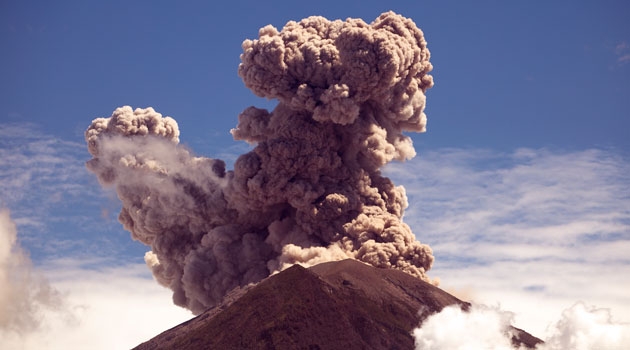
While highly memorable, this massive eruption has nothing on the long-term danger posed by nearby Indonesian volcanoes. Merapi, on the island of Java, in particular, tends to explode more like a high school science project than the gentle oozing volcanoes we see in Hawaii and often in Iceland.
Researchers looked at the chemical mix of tiny minerals formed in the lava to understand what exactly makes Merapi so explosive, and the answer is carbon dioxide gas. Accordion to Valentin Troll, a co-author of this study: Merapi’s magma interacts intensively with Earth’s crust before erupting. That’s highly important because when magma reacts with, for instance, the limestone that’s found in central Java right under the volcano, the magma becomes full to bursting point with carbon dioxide and water, and the eruptions get more explosive.
For those of you who may not have made fake volcanoes in school, the mix of vinegar and baking soda that is used produces carbon dioxide and water: exactly what is in this volcano! The thing is that in the volcano, the gases are mixed with molten rock instead of red food coloring. This horrible chemical reaction is thanks to that composition.
There are place-to-place variations in the Earth’s mantle, where magma originates, and in the Earth’s crust, which the magma travels through. Beneath Java is the chemistry of explosive volcanism. Understanding what’s going on won’t bring back lives lost to Merapi, but hopefully, it will help us understand what future behavior to expect. This work appears in Nature Communications and was led by Frances Deegan.
From exploding volcanoes, we now turn to exploding stars.
In looking at the ways in which stars die, there are two basic scenarios. Stars like our Sun eventually just sort of peter out as they run out of fuel in their core and stop creating energy via nuclear reactions. The light those reactions had been producing had been supporting the star against collapse under its own gravity, but in the absence of light, that core will collapse into a tiny, moon-sized, white dwarf star, while the remaining atmosphere, if any, drifts away. This is how the majority of stars will die.
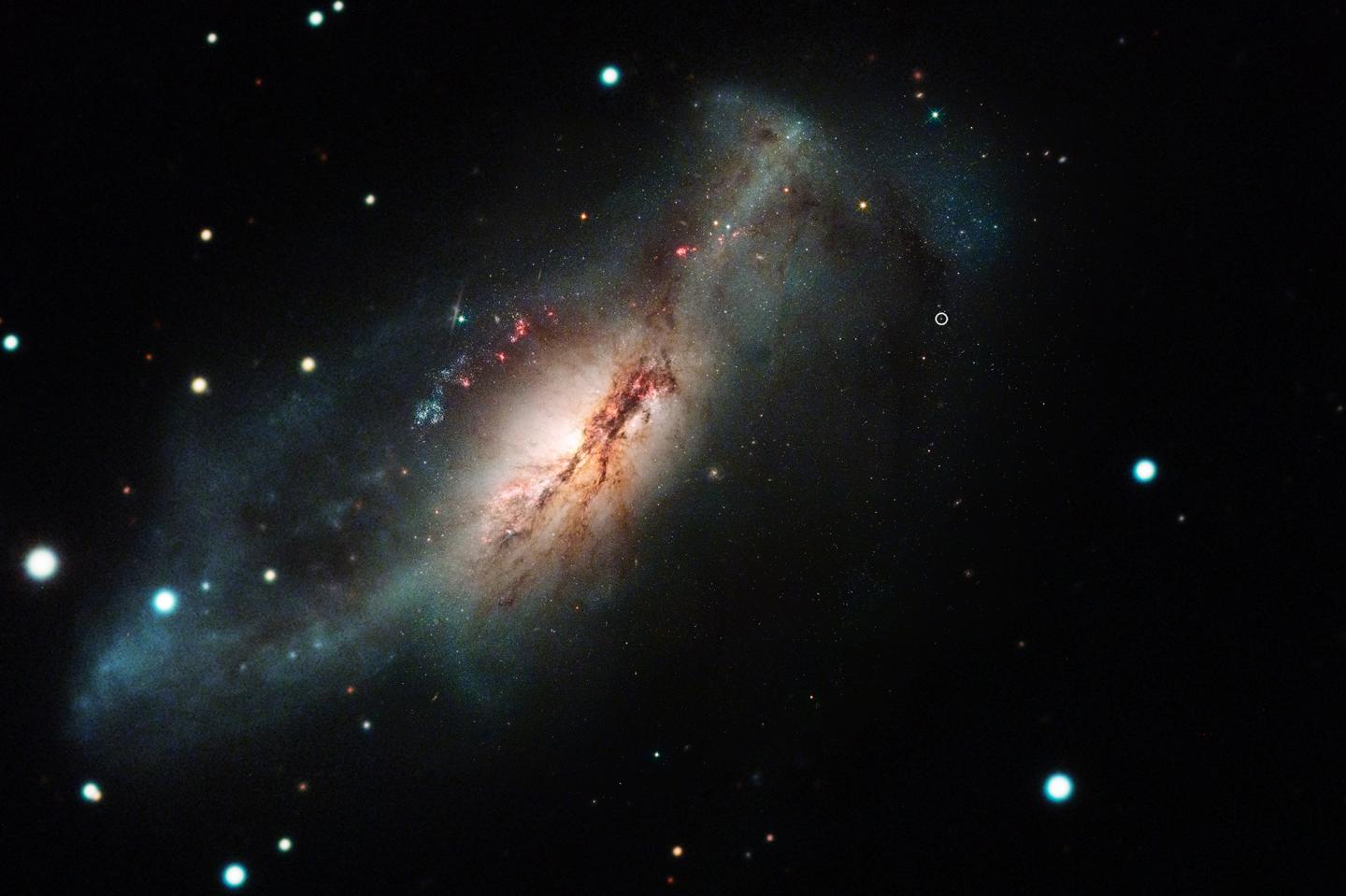
In a few instances, however, the collapsing core is so massive that instead of hunkering down into a smaller object, it also explodes. This can happen in a couple of different ways. If you pile a bunch of extra matter from a nearby star onto an already collapsed white dwarf, it will explode as a Type 1a supernova. If you have a truly giant star, greater than ten solar masses in size, it will collapse, and the core will become either a neutron star or black hole or nothing but energy as things around it explode in the collapse.
Now, we are learning, a theory on a third way for stars to die may be true and may be able to explain the death of the star that formed the Crab Nebula. This third form of death is electron capture collapse. Elderly red super-asymptotic giant branch stars can reach a point where they stop having nuclear reactions, their core starts to collapse, and the ionized oxygen, neon, and magnesium grab onto all the free electrons and suddenly get tiny by forming atoms. This is the atomic difference between everyone taking their own car to work and taking rideshare. As soon as all those particles combine, they take up a lot less space, and infalling material around them, it ends up going supernova.
While theories about this kind of explosion had existed for a long time, including theories that explained Chinese observations of the Crab Nebula’s birth in 1054, modern observations didn’t exist until now. In 2018, a weird supernova whose progenitor star was observed to be a super-asymptotic Giant Branch star in surveys was seen to explode. Careful observations of how that explosion evolved over time matched the electron capture supernova theories and taught us there are apparently more than two ways to explode a star. This work appears in Nature Astronomy and was led by Daichi Hiramatsu.
While not actually explosive, our third story somewhat continues our theme.
Using the new CHEOPS space telescope to study a known planet orbiting the star Nu2 Lupi, a weird dip in brightness was observed that could only be one thing – an additional planet. Okay, it could have been a whole lot of things, but by using archival data of this star system, researchers were able to determine that a third planet in the system had photobombed their images of the second planet.

This third planet has a roughly 107-day orbit and is at a distance from its star where we are only beginning to find planets. This system is less than 50 light-years away, and with systems like Hubble, or one day JWST, we may be able to measure all these world’s atmospheres. According to CHEOPS project scientist Kate Isaak: While none of these planets would be habitable, their diversity makes the system even more exciting, and a great future prospect for testing how these bodies form and change over time. There is also the potential to search for rings or moons in the Nu2 Lupi system, as the exquisite precision and stability of Cheops could allow detection of bodies down to roughly the size of Mars.
This work appears in Nature Astronomy and was led by Laetitia Delrez.
Continuing our theme of destructive destruction, we’d like to introduce you to GW200105 and GW200115. These two gravitational wave detections, just ten days apart, originated from the mergers of pairs of black holes and neutron stars. Detected by the LIGO and Virgo detectors, these discoveries allow astronomers to essentially lay down a royal flush of detections.
In September 2015, LIGO and Virgo made their first observations of a pair of black holes merging and sending gravitational waves rippling through the universe, where they would be detected as oscillations in the space between detectors as space literally expanded and contracted in reaction to this event. Just like different bells produce different kinds of sounds, and you can measure the size of a bottle by the kind of sound it makes when blown into, the size of merging objects can be measured by the gravitational waves they make in the space-time continuum.
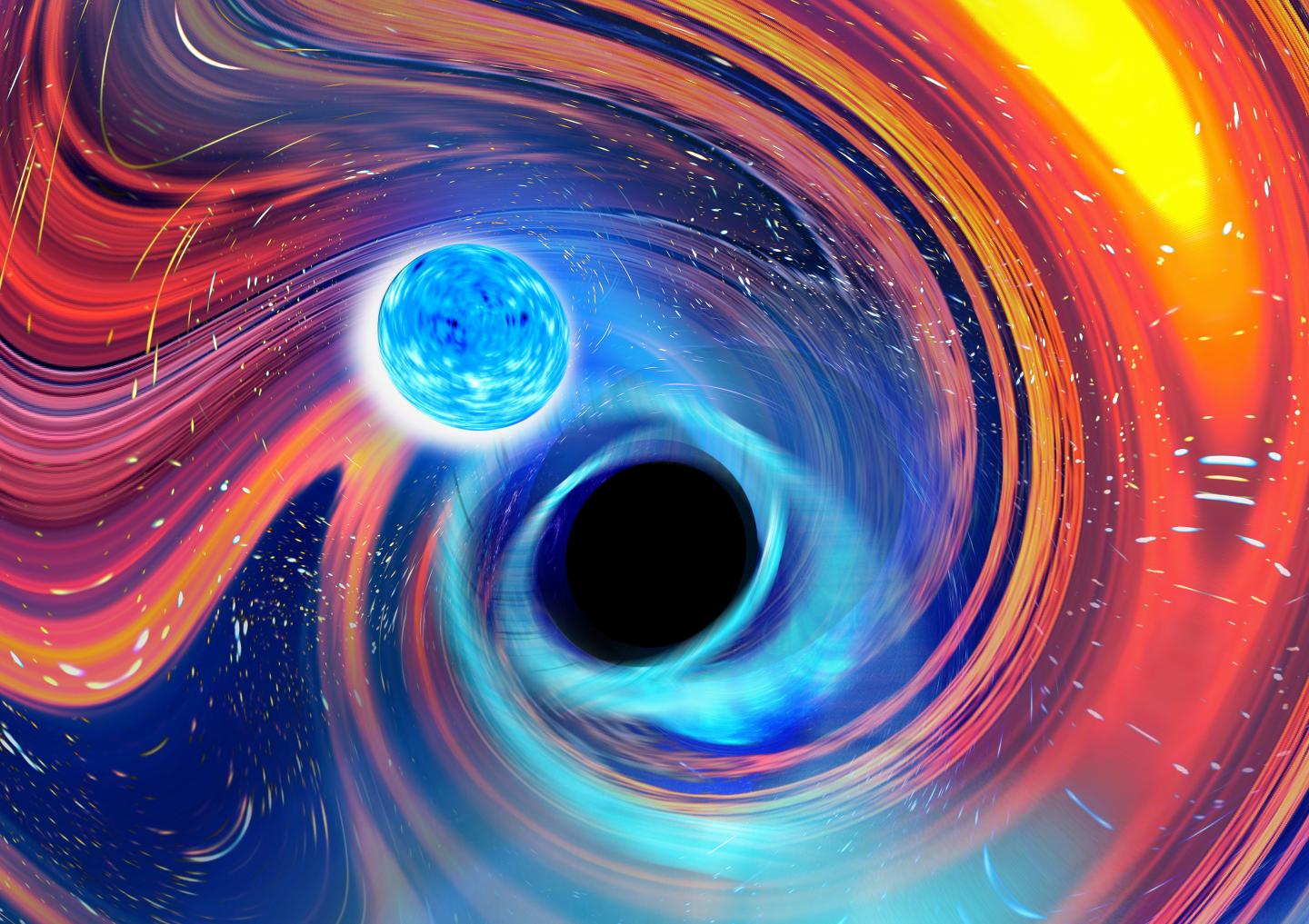
Yes, folks, you, like the detectors, expand and contract by ever so small an amount as these waves pass through you.
These waves are tiny and comparable to the size of a particle, not to the size of a person, and we’ll never notice them with our senses. It is frankly amazing we can detect them at all. I have to admit, I didn’t think we’d be able to ever make these detections from Earth, but determined scientists and engineers have a habit of finding a way.
From that first black hole-black hole merger, LIGO and Virgo have gone on to make numerous discoveries, including the August 2017 first discovery of two neutron stars merging. When it comes to generating detectable gravitational waves, there aren’t a lot of options out there. Two neutron stars can do it. Two black holes can do it, and the combo of a neutron star and a black hole can do it.
A quick literature review was unable to find a paper on the detection of any existing black hole-neutron star binary systems, although one 2005 paper, led by Eric Pfahl, postulated they should be very rare, with one being born only once per ten million years or less. They also should only last for about 100 million years before they merge. This means they are rare and short-lived and number among the hardest things to observe, although a paper from 2020 paper led by Debatri Chattopadhyay indicates that the Square Kilometre Array may be able to start detecting them if MeerKAT doesn’t get to it first.
It turns out LIGO and Virgo got to it first. That final detectable pair, the black hole-neutron star combination, has been seen not once, but twice at the moment of their merger into a bigger black hole.
Royal flush: that makes a black hole-black hole merger in 2015, a neutron star-neutron star merger in 2017, and now a black hole-neutron star merger in 2021.
That two of these were seen in ten days may seem a bit hard to fathom, but this is in part due to the ever-improving abilities of the detectors and the fact that random events sometimes will occur one after the other. Now that LIGO and Virgo can detect these, we look forward to seeing more and more combos of more and more different sizes and orbits to show themselves in their shaking of time and space.
We talk a lot about water on Mars here on the Daily Space. It’s an important topic. With plans underway to send humans to the red planet, scientists and engineers are concerned about how to provide the necessary resources for a prolonged mission. Water is heavy, and fuel is expensive, making it better for everyone involved if water is already on Mars, accessible, and relatively easy to make drinkable.

Recently, there was research that came out that said the south polar ice caps had liquid lakes of water underneath the surface. They were discovered with bright radar reflections taken using the Mars Advanced Radar for Subsurface and Ionosphere Sounding, or MARSIS, instrument about the ESA’s Mars Express orbiter. These lakes likely have a lot of salt dissolved in them, making them more briny than clear and not easily drinkable. Still, subsurface liquid water would be fantastic for crewed missions to be able to access all that necessary, life-sustaining fluid, even if it had to be purified first.
But if there is one thing we know about space anywhere off our planet, it is not friendly to biological life. So before we send people off to a distant world, even one in our own solar system, we want to make absolutely certain that what we think is water is actually water. And in new research published this week in Geophysical Research Letters, a team of scientists led by Carver Bierson and including Planetary Science Institute’s Than Putzig examined the data previously collected by MARSIS. Using a different analysis method than the previous paper, they concluded that there are other materials that could explain that bright reflection.
Put simply, the previous method involved how a material responds to an electric field. That led to the conclusion that liquid water caused the bright reflection. The new paper looked instead at how much electrical current the material could carry, using ice sheets here on Earth as analogs for Mars’ polar ice. And the results showed that the reflection could be due to clays, metallic minerals, or even salty ice.
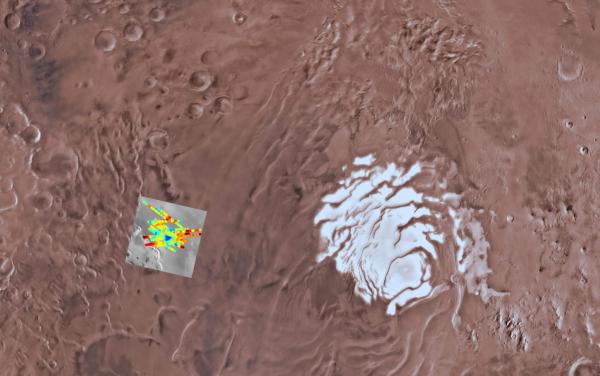
These results do not rule out the possibility of liquid water, mind you. They just mean that we cannot always make a confident decision based on one possible analytic method if there are other methods available. Think of it this way: Just because you see the glint off a rock in the distance doesn’t mean you’ve found gold, so before you bring all your mining equipment over, you want to make sure you have found the right mineral.
Or as Than reiterates: Because water — particularly in a liquid form — is so important to sustaining life, seeking out where it may exist on Mars today or in the past is of paramount importance to astrobiological studies. Ensuring that we fully consider other possibilities for reported detections of liquid water is crucial to the scientific process.
In 1908, in the middle of nowhere Siberia, a fairly large object streaked through the sky and exploded over the eastern Siberian taiga. This air blast is estimated to have flattened 80 million trees, killed countless reindeer and three humans, and created a shock wave through the atmosphere that was detected all around the world.
Tomorrow, our show will be highlighting the launches and history of rockets, so we’re going to talk about that June 30 event today instead. Asteroid Day is a new, UN-sanctioned, yearly event held on the anniversary of that bad day in Siberia, and it is a day on which scientists and science communicators work to remind everyone that rocks can still fall out of the sky and kill.
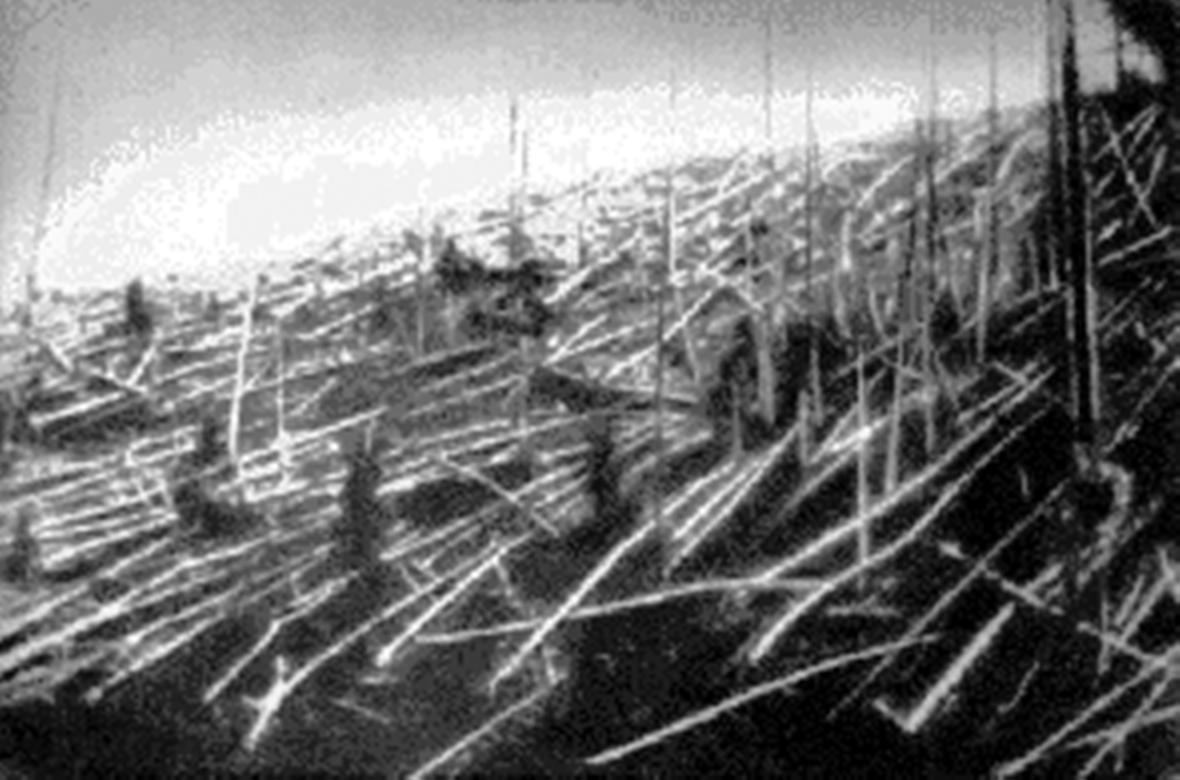
Tunguska isn’t the only human-observed major event. For many of you watching now, the 2013 event in Chelyabinsk was a wake-up call to just how dangerous a twenty-meter space rock can be. Streaking through the early morning sky and observed in security and dashboard cameras, this event included an explosion above the ground, a massive shock wave, and a fair amount of destruction. We are pleased to share that no reindeer are known to have been harmed and no deaths were reported.
[transcript unavailable]
Missions like Dawn, OSIRIS-REx, and Hyabusa2 allow us to better study asteroids, and future missions may help us learn to move them. Until we have that tech, we need to watch them and make sure we know when the next big one might be coming. Let’s hope that day is far away.
Until then, this has been the Daily Space.
Learn More
Chemistry to Blame for Indonesia’s Deadly Volcanoes
- Uppsala University press release
- “Sunda arc mantle source δ18O value revealed by intracrystal isotope analysis,” Frances M. Deegan et al., 2021 June 24, Nature Communications
Third Type of Supernova Observed: Electron Capture
- Las Cumbres Observatory press release
- University of California, Davis press release
- University of California, Santa Barbara press release
- “The electron-capture origin of supernova 2018zd,” Daichi Hiramatsu et al., 2021 June 28, Nature Astronomy
Planet Photobombs Images of Inner Sibling World
- University of Liège press release
- “Transit detection of the long-period volatile-rich super-Earth ν2 Lupi d with CHEOPS,” Laetitia Delrez et al., 2021 June 28, Nature Astronomy
Two Black Hole-Neutron Star Mergers Detected
- CNRS press release
- Northwestern press release
- University of Wisconsin-Milwaukee press release
- “Observation of Gravitational Waves from Two Neutron Star–Black Hole Coalescences,” R. Abbott et al., 2021 June 29, The Astrophysical Journal Letters
Polar Subsurface “Lakes” May Not Be Water After All
- Arizona State University press release
- PSI press release
- “Strong MARSIS Radar Reflections from the Base of Martian South Polar Cap may be due to Conductive Ice or Minerals,” C. J. Bierson, S. Tulaczyk, S. W. Courville, and N. E. Putzig, 2021 June 28, Geophysical Research Letters
Asteroid Day: Your Reminder to Look Up and Watch Out
- Today In Science: The Tunguska Explosion (EarthSky)
- Five Years after the Chelyabinsk Meteor: NASA Leads Efforts in Planetary Defense (NASA)
Credits
Written by Pamela Gay and Beth Johnson
Hosted by Pamela Gay and Beth Johnson
Audio and Video Editing by Ally Pelphrey
Content Editing by Beth Johnson
Intro and Outro music by Kevin MacLeod, https://incompetech.com/music/


 We record most shows live, on Twitch. Follow us today to get alerts when we go live.
We record most shows live, on Twitch. Follow us today to get alerts when we go live.